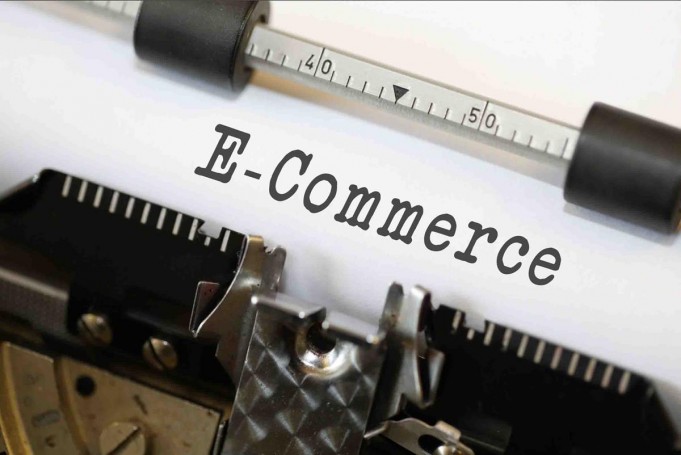The Top 10 E-Commerce Marketing Statistics
E-commerce refers to businesses, and individuals selling goods electronically with products, such as movies, music, and books. This is the overall preferred type of purchase, as other goods, such as food, beverages, and consumables aren’t as popular. E-Commerce marketing statistics show these goods are some of the fastest-growing businesses.
Reports from Nielsen and Shopify, draw attention to stats
- There will be 2.1 billion digital buyers worldwide in 2021.
- Almost 61% of shoppers didn’t purchase because trust logos were missing.
- Surprisingly, Amazon is behind 44% of all e-commerce sales.
- Mobile payments are becoming mainstream in most markets by 2026.
- In 2019, 14.1% of global retail sales were made online.
- e-Commerce marketing influences up to 56% of in-store purchases.
- Over 55% of Americans begin their product searches on Amazon.
- More than 18% of local searches lead to a sale within 24 hours.
1. In 2021, there will be 2.1 billion Digital Buyers Worldwide
The number of online shoppers is skyrocketing and people are likely to put more trust into this type of service. It includes ordering food, deciding which retail store’s new collection best fits your style, and even planning vacations. And it gets better, a whole range of digital resources, such as product reviews, are also easier to access online. The best eCommerce sites draw in the biggest number of customers, and people are likely to put more trust into this type of service.
2. Over 4 billion people of the global population are connected to the Internet, and 92.6% go Online
In 10 plus marketing stats, every day, 85% of users, or 3.4 billion spend six and a half hours browsing the Web. Moreover, customers are spending more time online, engaging in an expanding range of activities. Therefore, online accessibility, mobile technology, and digital innovations dictate your marketing options. An e-Commerce site is a must if you want your customers to buy what you’re offering.
3. Most 42% of Online Shoppers prefer to pay with their Credit Cards
E-commerce trends are dictated by user behavior, so these insights are quite useful to businesses. Moreover, in the US, there are approximately 160 million credit cardholders, which is about half of the total population. All these credit card users are potential e-commerce customers, and businesses will use various types of online tricks to lure them in.
4. 39% of Online Buyers prefer to pay for Online Goods and Services via PayPal
The e-commerce marketing stats in 2020, points out that PayPal connects directly to a user’s bank account. So there’s no need to own a credit card since buyers can pay for merchandise and sellers receive payments immediately. All of this is done without having to wait for checks to clear the bank as convenience drives these e-Commerce trends. However, if you look suspicious, PayPal may hold payments for 21 days.
5. PayPal had 267 million Active Registered Accounts by the end of 2018.
In the first quarter of 2019, there were 277 million active accounts, representing a 17% year-on-year growth. However, in 2002, PayPal was acquired by auction site eBay and made great gains in online popularity. Moreover, the e-Commerce market has recently expanded to brick-and-mortar retailers and shops. 34% of North American retailers planned to accept PayPal as a payment method by 2020.
6. In 2018, Retail eCommerce Sales Grew 23.3% over 2017
Physical sales are still the customer’s favorite purchase option, and the penetration of online commerce has been growing steadily. It has been growing for years now according to e-commerce marketing statistics in 2020. Also, it is showing no signs of slowing down as the less popular sectors are becoming more open for e-Commerce. Moreover, online marketing growth for 2020 is expected to hit 19.8%.
7. In 2019, 14.1% of Global Retail Sales were made Online
Online shopping has witnessed a steady growth in popularity worldwide as e-Commerce’s share of total global retail sales has nearly doubled from 2015 to 2019. Four years ago, just 7.4% of all retail sales made online, while in 2019 this number rose to 14.1%. Statistics predict that in the next four years, 22% of retail sales will come from online shopping.
8. Today, eCommerce Influences up to 56% of in-store purchases
As the figure above in marketing stats in 2020 indicates, eCommerce is so much more than just buying stuff on a website. So, if you do not realize this, and don’t take advantage, it’s unlikely that your business will thrive. The very fact that there is such a thing as offline-shopping in contemporary discourse; traditional shopping is no longer the norm.
9. The Value of Goods Purchased Online is expected to increase 78% by 2020
The value of goods being picked up from convenience stores and other locations is expected to increase threefold by 2020. However, today the majority of retailers utilize pickup points in convenience stores and lockers. This is along with the more established own-store click-and-collect model.
10. By 2019, B2B firms will spend more on e-Commerce Technology
With increased internet penetration on mobile devices, the future of e-Commerce is getting brighter by the hour. Also, the number is expected to rise according to marketing stats – by 2021, over 2.14 billion people will be buying goods online. The devices with the internet to online shoppers allow products to be purchased anywhere.









